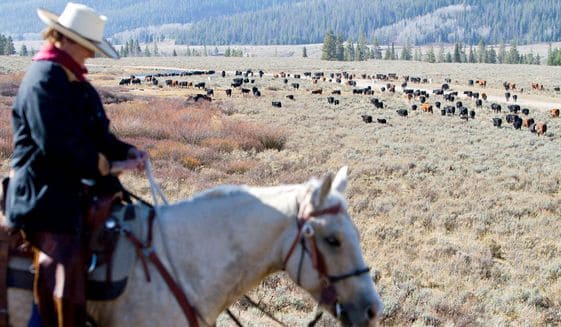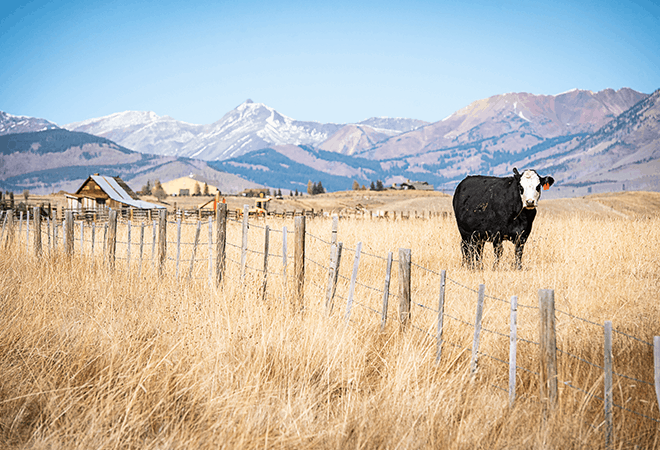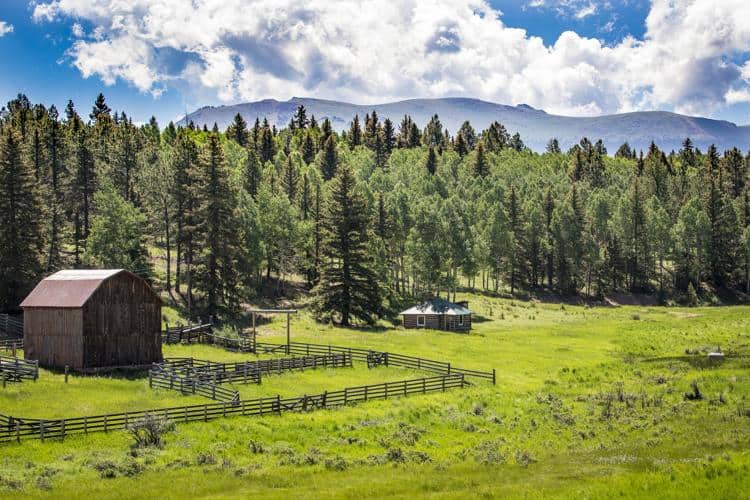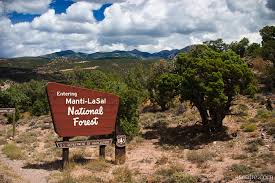This is just the rejection of a PI, but of interest. Here’s the link. Thanks to the reporter Angus Thuermer, for summarizing parts of the judge’s opinion.
A judge shared his reasoning Friday on why he refused to halt the killing of grizzly bears, killings that protect a historic Wyoming cattle drive and ranching operation on the Bridger-Teton National Forest.
Conservation organizations presented no evidence wildlife managers will remove more female cattle-eating grizzlies from federal Sublette County grazing allotments if he doesn’t immediately step in, U.S. District Judge Amit P Mehta said.
The conservation groups sued the U.S. Secretary of the Interior and others claiming the grazing plan violated the Endangered Species Act, among other laws, in part because it did not limit the removal or killing of female grizzly bears. Protected by the ESA, female grizzlies are a key component of the Yellowstone ecosystem population in question. The conservation groups sought an injunction to immediately stop the killings and removals.
But the nonprofits Western Watersheds Project, Yellowstone to Uintas Connection, and Alliance for the Wild Rockies “have not offered evidence of a ‘certain and great’ harm that is ‘likely to occur,’” while the case wends its way through court, Mehta wrote. In past years, an average of 0.7 female grizzly bears a year have been removed from the Upper Green River grazing area, the judge wrote. That suggests “the taking of more than one or two female bears during the pendency of this case is unlikely to occur.”
The conservationists did not convince the judge “that the killing of a single member of a threatened species constitutes irreparable harm, especially where, as here, the grizzly bear population has been growing for years,” Mehta wrote.
In reaching his conclusion, Mehta wrote that wildlife managers have several safeguards to ensure that the removal or death of female grizzlies to protect livestock does not endanger the Yellowstone Ecosystem population of an estimated 728 bears. “The lethal taking of a nuisance bear is a last resort,” Mehta wrote, “and there are many checks in the process to ensure that the killing of such a bear, especially a female, cannot be a sudden or spur-of-the-moment decision.”
Among the alternatives are trapping and relocating a suspected cattle-eating grizzly.
Western Watersheds and its allies wanted urgent action but were not urgent in their judicial appeal, Mehta also wrote. The plaintiffs waited more than three months before giving the government a required notice they were going to sue, Mehta wrote. That delay undermined arguments that the grazing plan required emergency intervention, he wrote.
The federal grazing allotments, authorized in 2019, allow ranchers to herd up to almost 18,000 animals, about 9,000 cow-calf pairs, onto the Bridger-Teton National Forest above the Green River. The U.S. Fish and Wildlife Service decided the plan posed no jeopardy to the continued existence of the Yellowstone Ecosystem grizzly.
In doing so, the federal wildlife agency bound the Forest Service to terms and conditions that call for a reassessment of operations should grizzly deaths exceed certain parameters. Ecosystem-wide, for example, Fish and Wildlife Service set the threshold for female grizzly mortality at 9% of the population.
But the Forest Service did not engage in “formal consultation” with FWS about the Kendall Warm Springs Dace, an endangered fish species whose only home on the planet is 984 feet of the 85-degree Kendall Warm Springs. A tributary of the Green River on the Bridger-Teton National Forest, the warm springs lie across the path of the Green River Drift.
Although grazing cattle are fenced out, cattle in the drift can pass through the 160-acre exclosure. That prospect alarmed the conservation groups who said the bovid herds would trammel the sensitive environment of the two-inch-long dace.
Ranchers agreed to either trail herds around the exclosure or truck them through, according to Mehta’s 31-page June 19 order. He rejected conservationists’ request for a “just-in-case” Warm-Springs-Dace injunction because “there is no additional relief that the court can grant.”
There’s other interesting stuff in the article. Here’s some info on the Green River Drift, in use since 1896. I guess there’s a story there somewhere bout how the dace survived drives for the last 124 years and what is different now.
Predating most federal land management agencies, the Green River Drift cattle trail has been continuously used since the 1890s by the Upper Green River Cattle Association ranchers to get cattle from spring pasture on the desert to summer pasture in the forest. Chilly fall weather causes the cattle to “drift” back out of the forest to return to their home ranches. The trail, 58 miles long with 41 miles of spurs, crosses BLM, State of Wyoming, National Forest, and private properties. It has played a pivotal role in the development of ranching in the area as well as in the development of relationships between Federal agencies that manage grazing allotments and private property owners. The Drift was listed on the National Register in November, 2013. Because it is still being used much as it has for more than 100 years, the Drift was listed as a Traditional Cultural Property (TCP), the first ranching related TCP in the nation.







